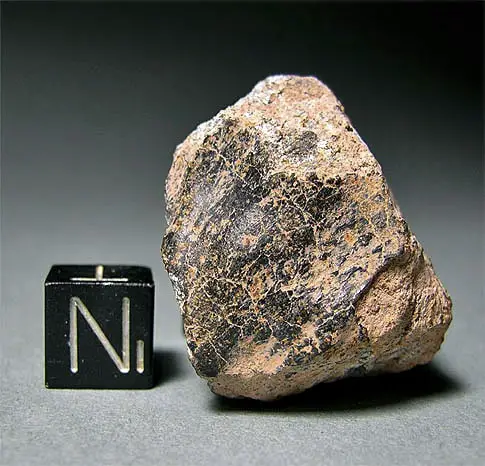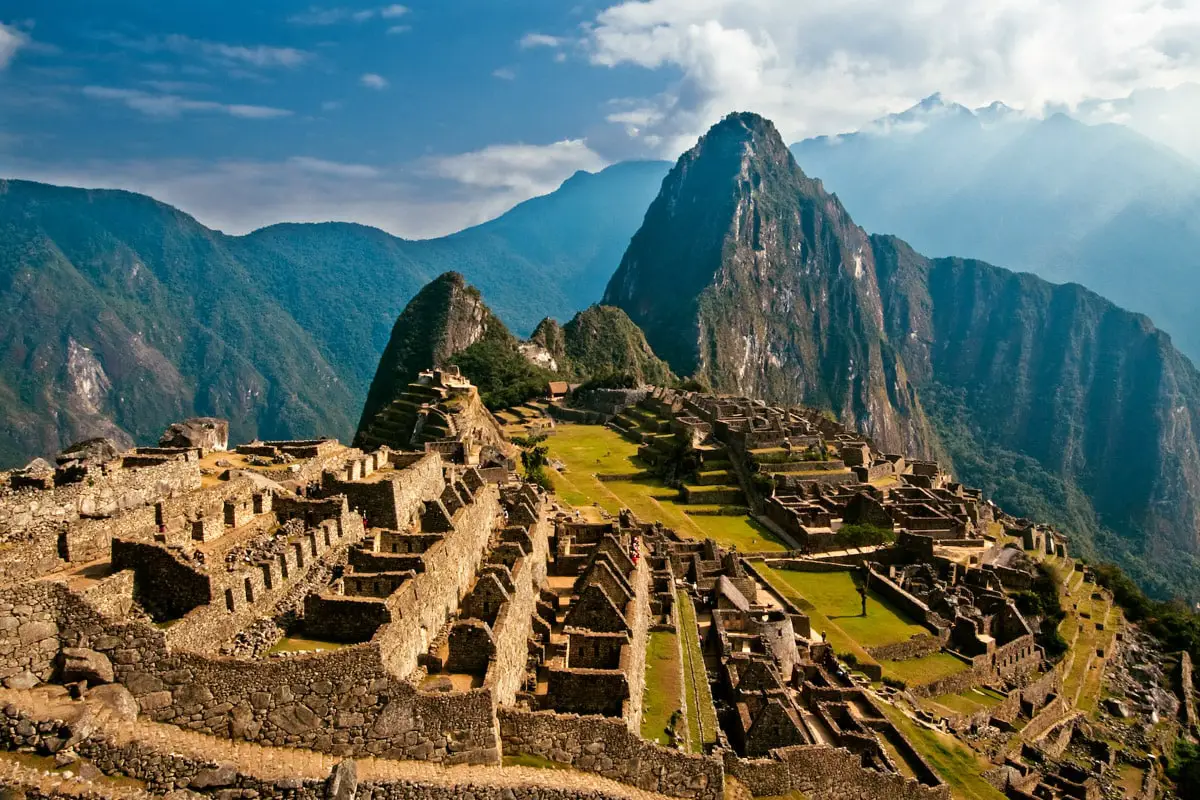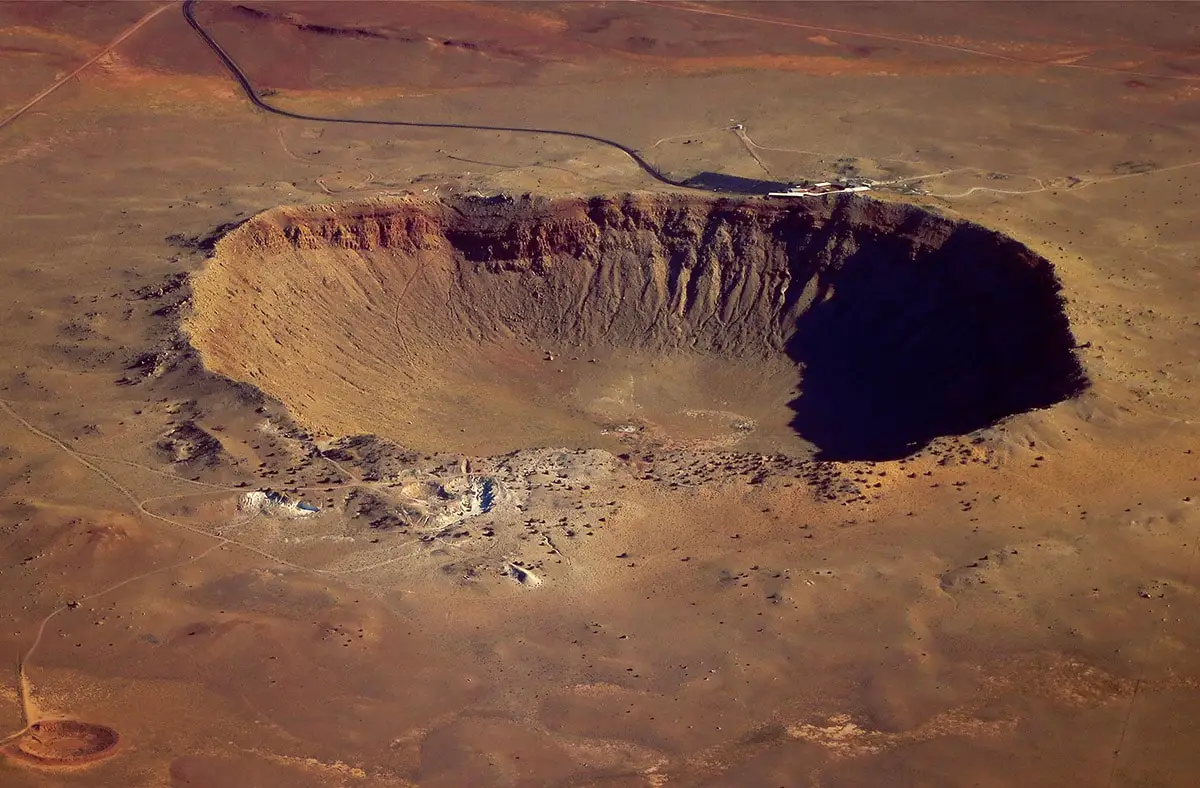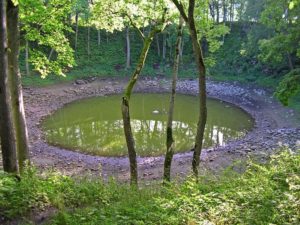World 🢖 South America 🢖 Peru
Impact craters 🢔 Geological wonders 🢔 Categories of wonders
Wonder
Carancas crater
 In short
In short
The first impact crater whose formation was observed by people in modern times was Carancas crater in Peru. It formed in the 15th September 2007.
 33.1%
33.1%
GPS coordinates
Location, address
Diameter
Depth
Age
Map of the site
If you see this after your page is loaded completely, leafletJS files are missing.
 In detail
In detail
Impact
It happened in 11:40:14 local time, 15th September 2007. Local people saw a bright flash, heard a deafening explosion (it was well heard also in the 10 km distant Desaguadero town), and soon a mushroom cloud raised above the ground. Some locals thought that army of Chile has attacked Peru.
Earth trembled, windows in the 1.3 km distant Huanocollo were shattered – most likely by the earthquake and not an explosion. An empty shack some 120 m west from the impact was bombarded by pieces of soil – but was not damaged heavily.
A man riding a bicycle some 100 m from the impact site fell down and was dizzy from all the things happening around – but his eardrums were not ruptured. Pieces of soil flew up to 350 m far.
Crater
The impact created in the soft soil a 13.5 – 14.2 m wide crater, 4.5 m deep, with a 1 m high rim around it. Earth and plants were scorched around the impact site.
In a few minute’s time the groundwater entered the crater and started to boil. According to locals, it boiled approximately for half an hour.
Ar was filled with fetid smells.
Mysterious illness
Soon locals rushed towards the site of impact to see this amazing natural spectacle. Some believed that the meteorite could have high value and were searching for it – and they really found many pieces around the crater. In total, some 600 people visited the place soon after the impact.
Some days later things took an unexpected turn. More and more people became ill – they got nausea, vomit, diarrhea, headaches, dermatitis. Some of the worst affected were 8 police officers who spent more time than others at the crater. In total some 200 people became ill – although it is possible that some part of them rushed to hospitals after hearing rumors that victims of the meteorite can get free medicine and in fact, they were not THAT ill.
Happily some days later the health of people improved – and now all these events seem to be much exaggerated.
It is not entirely clear what caused this illness. One hypothesis says that this is caused by the arsenic in the vapor – reportedly local groundwater contains much arsenic. The urine of some ill people contained much arsenic indeed.
Others deny this theory – the amount of arsenic in local groundwater is not too high. Another explanation is that people inhaled the vapor of meteorite itself. Chondrite can contain troilite – a sulfurous mineral that could be a hazard to health.
Whatever are the reasons – Peruvian experience shows that a visit to a fresh meteorite impact site can be hazardous to health.
Hyperfast chondrite?

Soon, on September 20, Peruvian scientists reported that in Carancas took place meteorite impact.
Research continues, but now it looks like some 7 – 12 t heavy (1.6 – 2 m in diameter) chondritic meteorite (H4-5 chondrite) entered the atmosphere with a speed of some 12 – 17 km per second.
As it was going through the atmosphere from east to west, it lost part of its mass and slowed down to some 3 – 6 km/sec.
The ground was hit by approximately 0.3 – 3 t heavy, 0.5 – 1.1 m large meteorite and there was released energy with an equivalent of 1 – 3 t TNT.
Pieces of this meteorite were found nearby, up to 200 m far from the crater, small meteorite grains are mixed in the soil as well.
Scientists were puzzled by the fact that meteorite was hot – in general, such meteorites are cold after their fall. Now it known that such relatively small meteorites can cross the atmosphere without dividing into several pieces.
New landmark
People in Carancas village have decided to preserve this amazing landmark. It is covered with a temporary tent now and there is planned to build a small museum over it.
This shows how fast things can change. In summer 2007 these empty fields near Carancas were of no interest to the outside people. Then in some minutes, everything changed and… now we got another landmark!
Estimates show that meteorites of such size fall on Earth yearly – but most of them disappear in the sea or remain unnoticed in remote areas.
References
- G.Tancredi, J.Ishitsuka, P.H.Sschultz, R.S.Harris, P.Brown, D.O.Revelle, K.Antier, A.Le Pichon, D.Rosales, E.Vidal, M.E.Varela, L.Sánchez, S.Benavente, J.Bojorquez, D.Cabezas, and A.Dalmau. A meteorite crater on Earth formed on September 15, 2007: The Carancas hypervelocity impact. Meteoritics & Planetary Science 44, Nr 12, 1967–1984 (2009).
Carancas crater is included in the following list:
 Linked articles
Linked articles

Wonders of Peru
Peru is one of the most interesting and diverse countries in the world. Many landmarks here are unique, without analogs in the world. Highlights of Peru are the rich archaeological heritage, historical cities with colonial architecture, impressive river canyons, waterfalls, and rich biodiversity.

Impact craters
There are many pieces of solid matter flying around in space. And VERY frequently they fall on the surface of the Earth. There are estimates that every year on Earth fall 18,000 – 84,000 meteorites larger than 10 grams: e.g. one meteorite every 6 – 30 minutes.
This category includes outstanding impact craters – detectable scars on the surface of Earth left by a body coming from outer space. The category includes also meteorites – natural objects from outer space.

Wonders of South America
There is little doubt – South America is one of the most spectacular… maybe the most spectacular continent of the world.
There is located the second-highest mountain chain in the world, the largest rainforest, the tallest volcanoes, and the tallest and largest waterfalls. The highest biological diversity in the world is reached somewhere near the eastern ranges of the Andes in Ecuador, Peru, or Colombia.
 Recommended books
Recommended books
DK Eyewitness Travel Guide: Peru
Explore Peru region by region, from local festivals and markets to day trips around the countryside and a journey to Machu Picchu in the Inca heartland.
Rocks from Space: Meteorites and Meteorite Hunters
This popular nontechnical introduction to the fascinating world of meteorites, asteroids, comets, and impact craters is now even better! With more than 50 new photographs and updated illustrations, new and expanded appendixes, and some fun cosmic humor, Rocks from Space, Second Edition, journeys into the last frontier for close-up looks at the latest astronomical discoveries.



